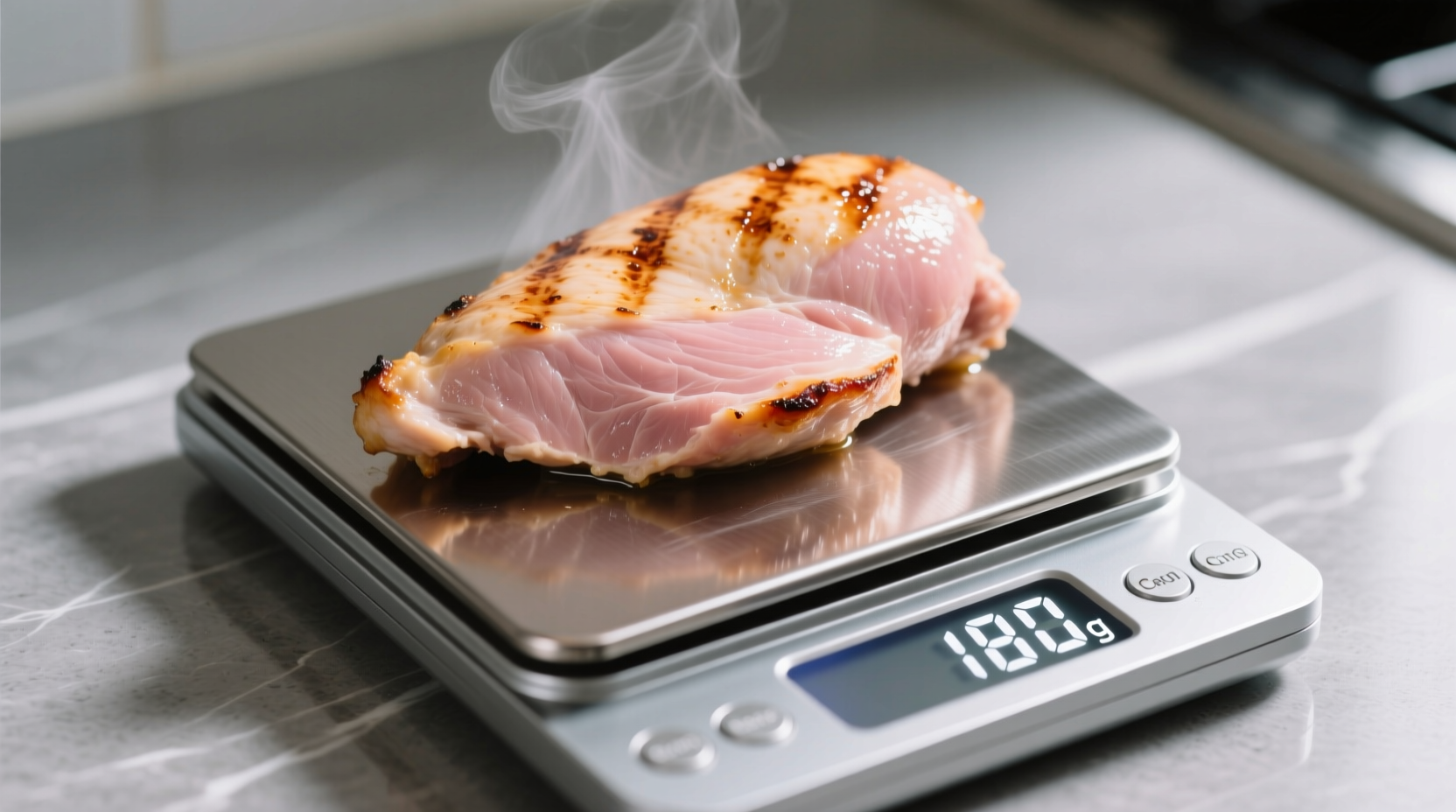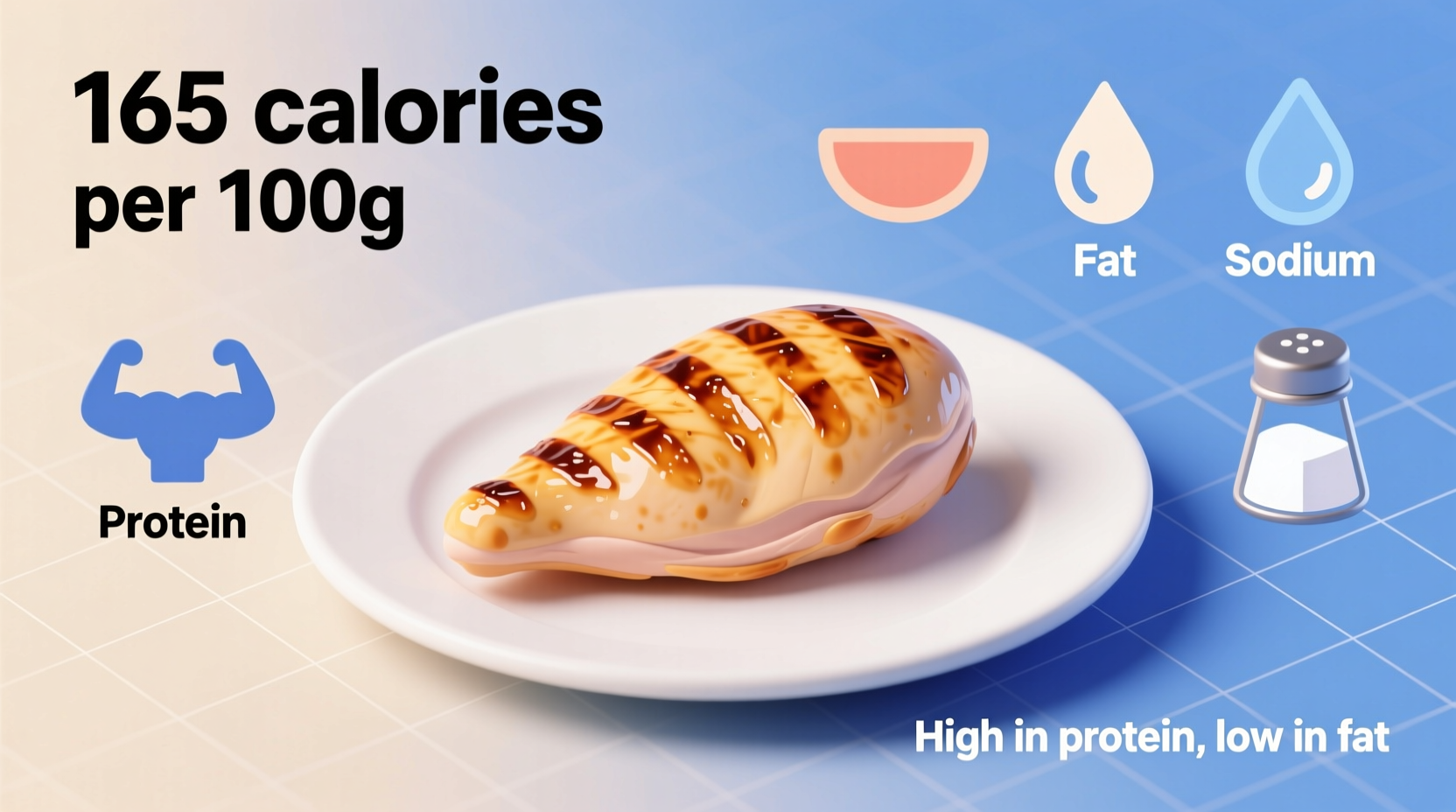When tracking your daily nutrition, knowing the precise calorie content of staple foods like chicken breast is essential for effective meal planning. This comprehensive guide provides accurate, science-backed information to help you make informed dietary choices without unnecessary guesswork.
What Determines Calorie Count in Cooked Chicken Breast?
The calorie content isn't fixed—it shifts based on several key factors that many nutrition resources overlook. Understanding these variables helps you calculate more accurate totals for your specific preparation method.
| Factor | Impact on Calories | Practical Example |
|---|---|---|
| Cooking Method | Grilled: -5% calories | Baked: -3% | Fried: +25-40% | 3oz grilled breast: 142 calories vs fried: 195 calories |
| Portion Size | Calories scale linearly with weight | 4oz serving: 187-220 calories (vs 3oz: 140-165) |
| Added Fats | 1 tsp oil adds 40 calories | Chicken cooked with 1 tbsp olive oil: +120 calories |
| Moisture Loss | Shrinks portion size by 20-25% | 4oz raw = 3oz cooked (same protein, higher calorie density) |
USDA-Verified Nutritional Breakdown
The United States Department of Agriculture maintains the most authoritative food composition database. According to USDA FoodData Central entry #05006, here's the precise nutritional profile for 3 ounces (85g) of cooked, skinless, boneless chicken breast:
- Calories: 142 (range: 140-165 depending on preparation)
- Protein: 26.7g (53% of daily value)
- Total Fat: 3.1g (mostly unsaturated)
- Saturated Fat: 0.9g
- Cholesterol: 85mg
- Sodium: 61mg (naturally occurring)

How Cooking Method Changes Nutritional Content
Many people don't realize that cooking technique significantly impacts the final calorie count. When chicken loses moisture during cooking, the remaining nutrients become more concentrated per ounce.
According to research published in the Journal of Food Composition and Analysis, dry-heat methods like grilling cause the most moisture loss (22-25%), slightly increasing calorie density compared to raw weight. Conversely, poaching or steaming preserves more moisture, resulting in marginally fewer calories per cooked ounce.
When using oil or butter:
- 1 teaspoon of olive oil adds 40 calories
- 1 tablespoon of butter adds 102 calories
- Marinades with sugar or oil can add 15-30 calories per ounce
Practical Application for Meal Planning
For accurate tracking, follow these professional chef techniques:
- Weigh after cooking: Use a kitchen scale on cooked portions since moisture loss changes weight
- Account for added fats: Measure oils precisely—free-pouring often doubles estimated amounts
- Adjust for recipe variations: Chicken in creamy sauces absorbs fat, increasing calories by 15-25%
- Consider bone-in portions: 3oz cooked weight refers to meat only—bones add weight but zero calories
Dietitians at the Academy of Nutrition and Dietetics recommend tracking cooked weights for accuracy, as raw-to-cooked conversion varies significantly based on your specific cooking conditions.
Why Chicken Breast Remains a Nutrition Powerhouse
Despite minor calorie variations, chicken breast consistently delivers exceptional nutritional value. With approximately 31g of protein per 100g cooked weight, it provides one of the highest protein-to-calorie ratios among common protein sources. This makes it particularly valuable for:
- Weight management programs requiring high satiety
- Muscle preservation during calorie restriction
- Balanced meal planning for active individuals
- Dietary approaches emphasizing lean protein sources
Unlike processed protein alternatives, chicken breast contains naturally occurring B vitamins, selenium, and phosphorus without artificial additives—providing comprehensive nutritional benefits beyond basic macronutrients.











 浙公网安备
33010002000092号
浙公网安备
33010002000092号 浙B2-20120091-4
浙B2-20120091-4